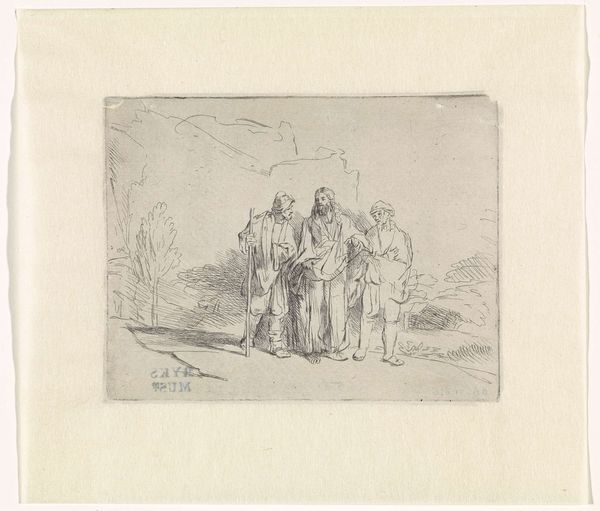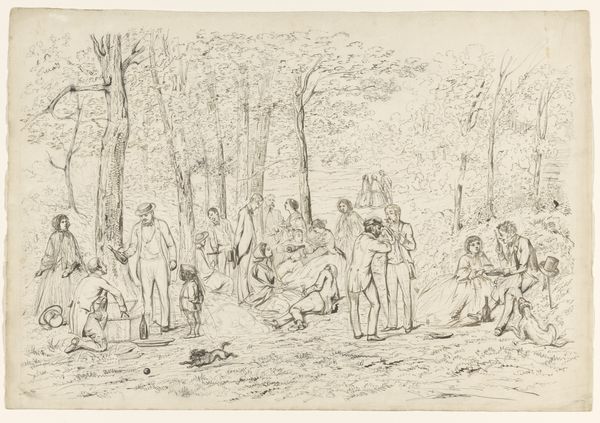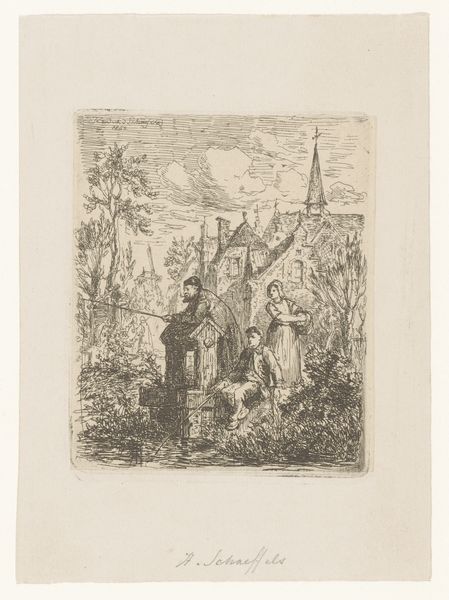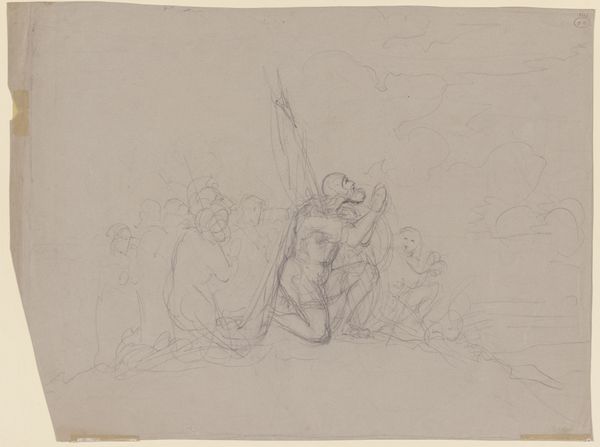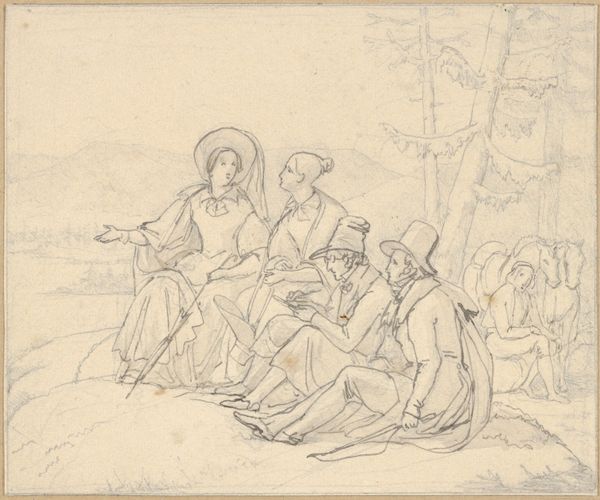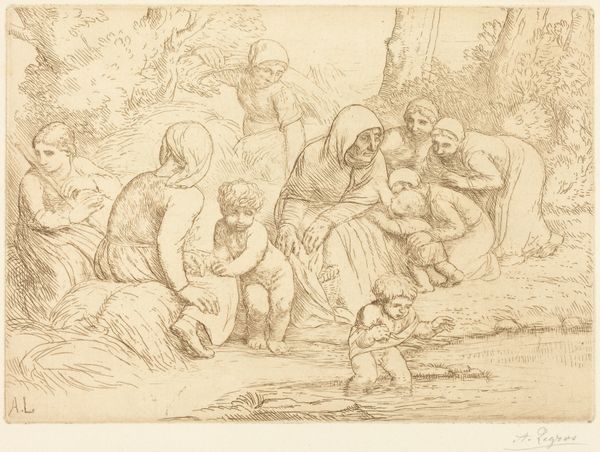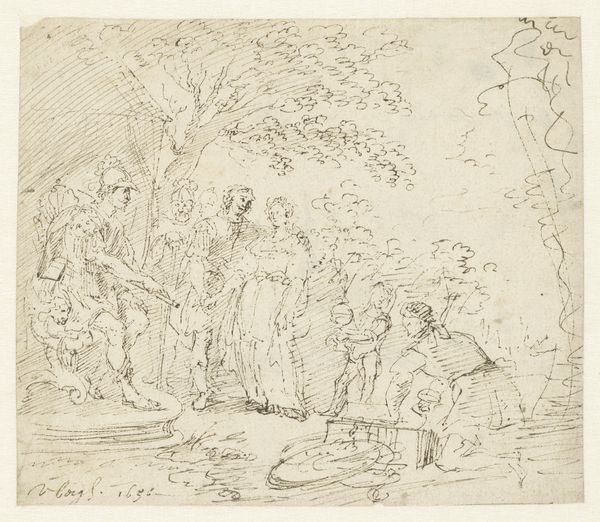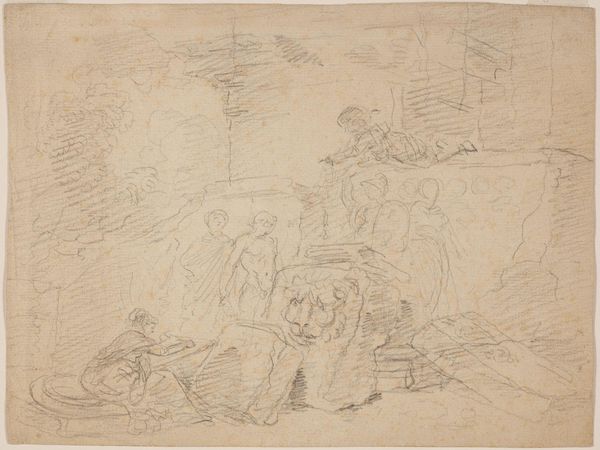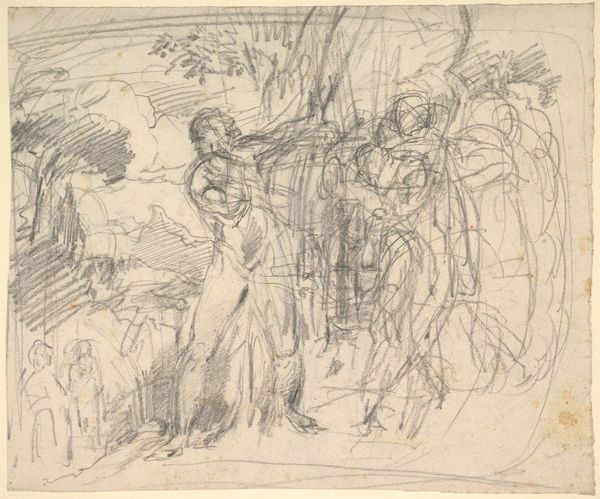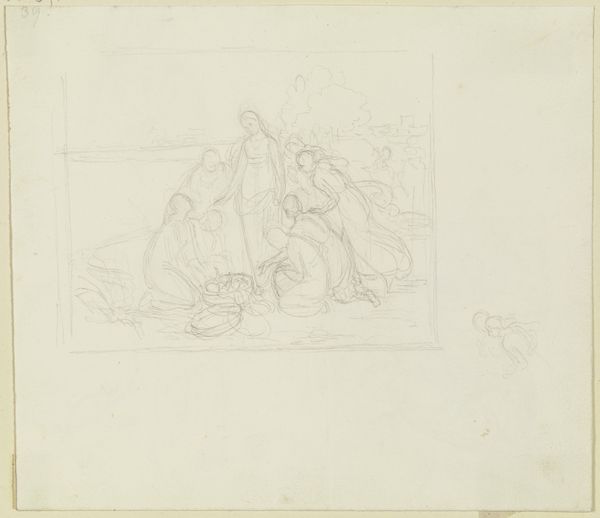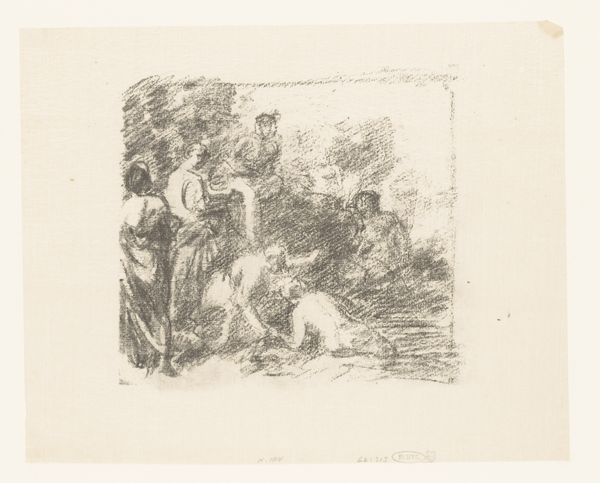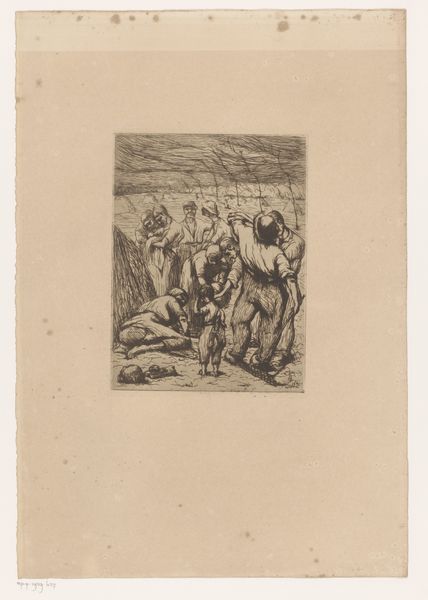
drawing, print, pencil
#
drawing
# print
#
landscape
#
pencil
#
genre-painting
#
realism
Dimensions: sheet: 34.8 x 21 cm (13 11/16 x 8 1/4 in.)
Copyright: National Gallery of Art: CC0 1.0
Curator: This drawing, "Washerwomen" by Félicien Rops, dates to around 1884-1887. It's executed in pencil and exists as both a drawing and a print. What are your initial thoughts? Editor: It strikes me as very subdued, almost melancholic. The limited palette emphasizes the working-class environment, giving the scene a somber mood. Curator: Indeed. The rough paper stock would have been inexpensive, easily accessible to an artist capturing daily life, the labour itself. Considering its existence as a print, we need to think about the artist aiming for circulation to a wider public and what the implications would have been in regards to class representation. Editor: Absolutely. And seeing washerwomen in art served multiple roles for viewers; images like this reflected anxieties, societal realities, while galleries promoted realism, showcasing previously ignored classes. This brings a type of dignity, no? Curator: Dignity, certainly. It’s also fascinating to think about the materiality of the labor shown. Notice how the artist renders the dampness of the clothing and its inevitable impact of friction, erosion on textiles… laundry was anything *but* clean work. Editor: Precisely! Looking at Rops' drawing in light of history shows us it’s more than just an everyday moment. This drawing invites us to consider societal forces at play that impact every artwork created and how social stratification dictated lived experiences, reflected even in seemingly straightforward images like "Washerwomen". Curator: It is powerful how a seemingly simple drawing using inexpensive materials becomes so laden with contextual meaning when you consider labour practices of the era. I will leave our listeners to reflect on that notion further.
Comments
No comments
Be the first to comment and join the conversation on the ultimate creative platform.
